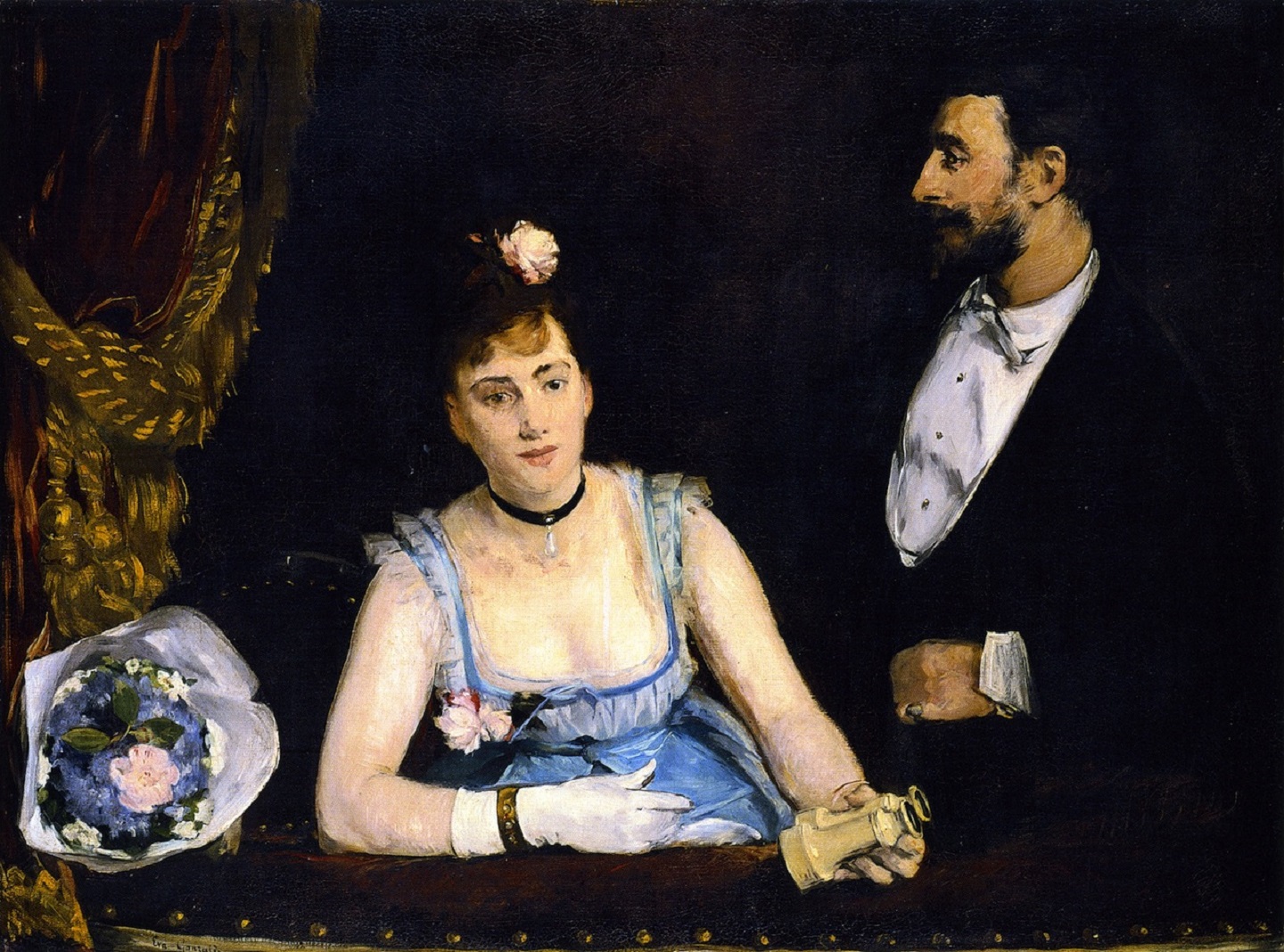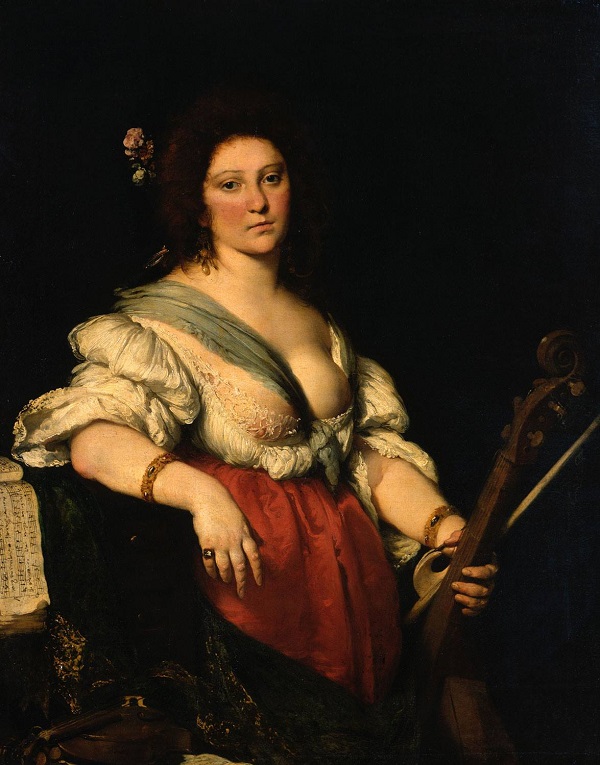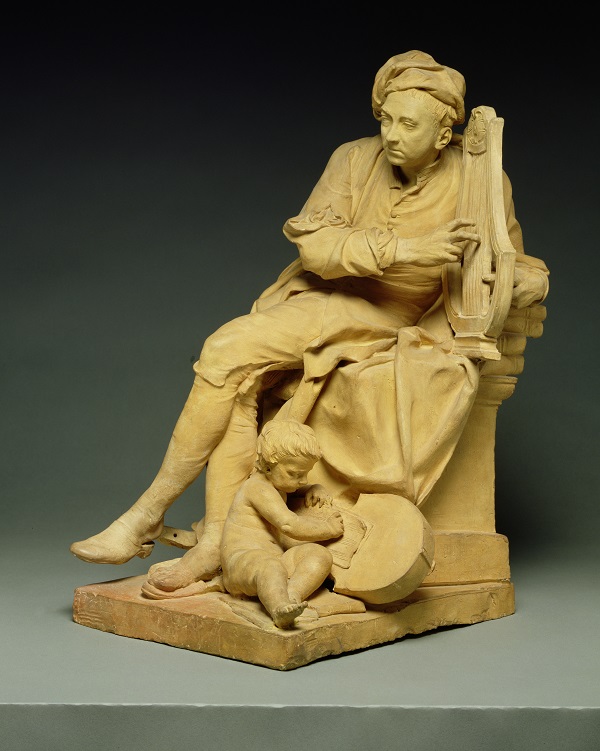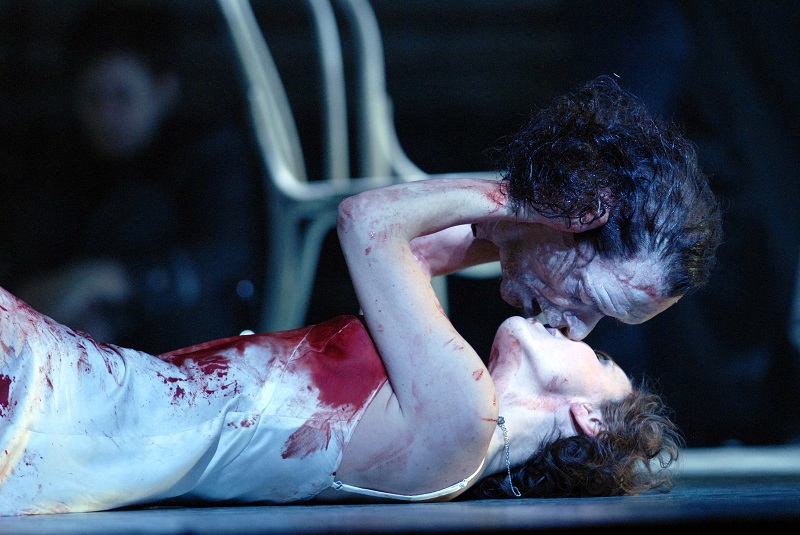
A Box at the Theatre des Italiens, Eva Gonzalès, oil painting, 1874, France. © Musée d'Orsay, dist. RMN-Grand Palais / Patrice Schmidt
It almost works as the set-up of a joke. “A storyteller, a singer, a musician and a designer walk into a bar.” Only instead of a punchline, this ends with an art form so breathtakingly sensorial that four centuries later, its classics still captivate audiences.
Opera: Passion, Power and Politics, the Victoria and Albert Museum’s maiden exhibition at its new Sainsbury Gallery, frames the sociopolitical contexts surrounding seminal opera premieres across seven European cities. Condensing a 400-year legacy into a flexible but only-so-big subterranean space is in itself an ambitious endeavour, made even more so with so complex a subject.
In chronological order, the exhibition takes us to Venice for Monteverdi’s L’incoronazione di Poppea (1643), London for Handel’s Rinaldo (1711), Vienna for Mozart’s Le Nozze di Figaro (1786), Milan for Verdi’s Nabucco (1842), Paris for Wagner’s Tannhäuser (1861), Dresden for Strauss’ Salome (1905) and, finally, Leningrad or St Petersburg for Shostakovich’s Lady Macbeth of the Mtsensk District (1934). At the entrance, assistants hand out audio sets and headphones that will deliver the visit’s predetermined soundtrack.
Although opera was first performed in and believed to have originated from Florence, it is in Venice that we begin. An old map sketches the layout of the port city while jewellery, fine combs and treasured collectibles paint a picture of the grandeur and decadence enjoyed by the city as a centre of maritime trade. Even when the plague and new shipping routes to Asia threatened its political and economic structures in the mid-17th century, its culture still flourished, drawing gamblers and bohemians in search of a good time. Part of that quest lay in novel entertainment and the drama of opera quickly enticed.
Venice’s autonomy meant entertainment was not subject to state sanctions. Wealthy aristocrats behind the commercially run theatres welcomed opera and with it, contentious subject matters that would have never been allowed in Rome.
Claudio Monteverdi’s L’incoronazione di Poppea, for instance. First performed at the Teatro Santi Giovanni e Paolo during the 1643 carnival season, it was among the earliest operas to draw from historical people and events, referencing Nero in a tale of lust and greed. This blatantly anti-Roman spirit delighted audiences in Venice.

Photo Scala, Florence/bpk, Bildagentur fuer Kunst, Kultur und Geschichte, Berlin
A contemporary courtesan’s costume, a pair of cringe-worthy chopines (tall clogs to protect women’s feet from muddy streets), oil paintings — including portraits of Monteverdi and singer and composed Barbara Strozzi — and instruments such as the lute and viola are displayed, as is a stage dedicated to a lavishly decorated harpsichord. Tying in the entire experience is the romantic duet aria Pur ti Miro playing through the headphones, evoking the passion for which opera is known. A sheer, full-sized screen with a stage set printed onto it demarcates the Venice and London sections, and the exhibition gallops on from there.
Old maps open each city’s introduction, the geographical visual serving to underline the cultural artefacts and sociopolitical narratives that follow. The presentation of the latter appears as though curator Kate Bailey magnified the results of her brainstorming onto the black walls. Large yellow sheets akin to Post-it notes spell out the who, what, where, when and why, while scribbled around these in the effect of white chalk are relevant events, notes and quotes.
Contextual frameworks anchor each section, tying operatic subjects to events taking place around them. In early 18th-century London, where Queen Anne’s stable rule invited rapid immigration, Italian-style opera was disdained by critics as pandering to immigrants and allowing foreign influences to usurp proud British productions and culture. “Our great-grandchildren will be curious why their forefathers used to sit like an audience of foreigners in their own country to hear plays acted in a tongue which they did not understand,” read a Spectator article a month after Handel’s Rinaldo made its debut.

Museum no. M.3-1922. © The Fitzwilliam Museum, University of Cambridge
In Vienna, the city of enlightenment, Mozart’s Le Nozze di Figaro challenged the role of servants in theatre as comic sidekicks by centralising the characters as protagonists with ambitions and desires equal to those of the elite. Giuseppe Verdi was commissioned to write an opera based on the biblical story of Nabucco just as a divided Italy was striving to create a unified identity, and Va, Pensiero or the “Chorus of the Hebrew Slaves” from the third act became the unofficial Italian national anthem.
Richard Strauss put Oscar Wilde’s play, Salome, to music in Dresden shortly after Sigmund Freud’s Studies on Hysteria was published, placing an anti-heroine in the spotlight as the suffragette movement gained momentum. Materials deemed in contradiction with Soviet propaganda were subjected to fierce censorship and Shostakovich would feel Stalin’s heavy hand for themes covered in Lady Macbeth of the Mtsensk District.
Finally, visitors arrive at an eighth room: World Passion, where a video montage of key post-war operas captures the global embrace of and wide-ranging experiments on opera, from Philip Glass’ Einstein on the Beach to George Benjamin’s Written on Skin.
Many of the artefacts throughout are intriguing, with standout items including a near life-size working reproduction of a deep-perspective baroque opera set redolent with rolling waves and a storm-tossed ship as well as original handwritten scores such as Mozart’s draft of Cherubino, the first aria in Figaro. Heightening the immersion are videos, the most gripping of which was Salome’s necrophilic dance with the severed head of Jokanaan played on a large screen.

Meanwhile, a visitor favourite is a rare footage of Shostakovich banging on the piano, the scene projected against the wall of his reconstructed study, the entrance symbolically cordoned off. All this happens to the crescendos and diminuendos of emphatic arias, duets and choruses streamed directly into the ears of visitors.
The overall narrative has its weaknesses. The most glaring is that the history of opera itself is conspicuously absent — even a paragraph or two would have been welcomed. The choice of narrative paints the art form in the broadest of brushstrokes and lacks the heft to effectively communicate its richness and complexity. The selection featured sometimes seems arbitrary; in some cases — Nabucco, for instance — its relationship to time and place is indisputable while the connections in other cases can be tenuous. Then again, with such a wide repertoire to choose from, whittling down the list cannot have been easy. As for the neophyte intimidated by the subject matter, the exhibition dispenses with convoluted lingo and explanations to appear concise and approachable.
It must be said that the exhibition achieves what it sets out to do, depicting the art form’s role as a reflection, commentary and even critique of society, particularly when biblical or mythological themes began giving way to contemporary subjects. Wagner’s strongly sexual Tannhäuser in Paris is said to be among the building stones of modernism despite a mere three-day run — political delicacy forced him to withdraw the play — and his ideas are said to have penetrated other artistic circles. In fact, Édouard Manet’s Music in the Tuileries Garden — on display here — painted just a year later was reportedly inspired by Wagner. It established Manet as among the first artists to break away from historical or mythological subjects in favour of modern-life scenes and paved the way for the Impressionists.
Regardless of the visitor’s familiarity with the art form, Opera: Passion, Power and Politics is a rousing wander. Art often serves as a mirror of life and the exhibition covers the major expressions, from the fantastic and tragic to the comic and grotesque.
'Opera: Passion, Power and Politics' is on at the Victoria and Albert Museum in London until Feb 25. Tickets can be pre-booked and are priced between £15 and £21 for adults. Concessions apply. Find out more at https://www.vam.ac.uk/exhibitions/opera. This article first appeared on Jan 8, 2018 in The Edge Malaysia.


